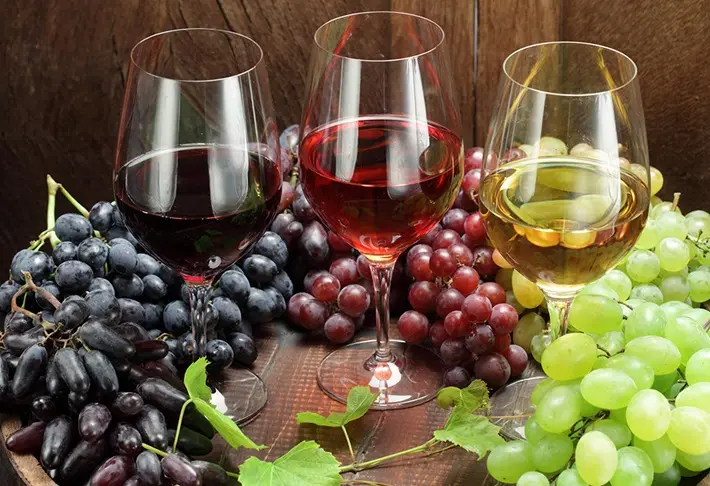Prosecco is one of the most popular sparkling wines in the world, known for its light, fruity flavors and refreshing bubbles. While many enjoy this Italian classic, few truly understand the intricate process behind its creation. In this article, we will explore the key steps involved in making Prosecco, from selecting the grapes to bottling the final product.
Selecting the Grapes
Glera: The Main Grape Variety
Prosecco is primarily made from the Glera grape, which has been cultivated in Italy for centuries. This white grape variety is native to the Veneto and Friuli Venezia Giulia regions in northeastern Italy, where the climate and soil are ideal for its growth. Glera grapes produce wines with crisp acidity, light body, and floral and fruity notes, making them perfect for sparkling wine production.
Other Approved Grapes
While Glera is the primary grape, winemakers can use up to 15% of other grape varieties in the blend. These may include Verdiso, Pinot Bianco, Pinot Grigio, and Chardonnay. These additional grapes can add complexity to the flavor profile of the wine.
Harvesting the Grapes
Timing the Harvest
Harvesting grapes at the right time is crucial for creating high-quality Prosecco. The grapes are usually picked in late August or early September when they have reached the ideal balance of acidity and sugar. If harvested too early, the wine may be too acidic; if too late, it could be overly sweet and lack freshness.
Hand-Picking vs. Machine Harvesting
In some vineyards, grapes are hand-picked to ensure only the best quality fruit is used. Hand-picking allows workers to carefully select clusters and avoid damaging the grapes. In larger vineyards, machines may be used for efficiency, though care is taken to avoid crushing the grapes prematurely.
Pressing the Grapes
Gentle Pressing
Once the grapes are harvested, they are quickly transported to the winery for pressing. The goal is to gently extract the juice without breaking the skins too much, as this can lead to unwanted bitterness. Modern pneumatic presses are often used to control the pressure and minimize damage to the fruit.
Must Fermentation
The juice extracted from the grapes is called “must.” At this stage, the must is filtered to remove any solids and is then ready for fermentation.
See Also: Prosecco Calorie Content: How Many Calories Are In One Glass?
The Charmat Method: Fermentation
Primary Fermentation
Prosecco is made using the Charmat method, also known as the tank method. This process involves two separate fermentations. The first fermentation takes place in large stainless steel tanks, where the grape juice is converted into alcohol by adding yeast. The tanks are temperature-controlled to ensure that fermentation occurs slowly and at a cool temperature, which helps to preserve the wine’s fresh and fruity characteristics.
Secondary Fermentation: Creating the Bubbles
Once the primary fermentation is complete, a mixture of sugar and yeast is added to the wine to trigger a second fermentation. This takes place in sealed stainless steel tanks, and as the yeast consumes the sugar, carbon dioxide is produced, creating the bubbles that make Prosecco sparkle.
Aging the Wine
Short Aging Period
Prosecco is typically aged for a shorter period compared to other sparkling wines, such as Champagne. Most Prosecco is bottled and released within a few months of the second fermentation. This quick turnaround helps to retain the wine’s fresh, fruity character, which is a hallmark of Prosecco.
Types of Prosecco Based on Aging
There are different classifications of Prosecco based on how long it is aged on the lees (the dead yeast cells) after fermentation. Prosecco Spumante, for example, has a longer aging period and is fully sparkling, while Prosecco Frizzante has fewer bubbles and a lighter texture.
Bottling the Prosecco
Filtering and Stabilization
Before bottling, the wine is filtered to remove any remaining yeast and impurities. It is also stabilized to prevent further fermentation once it is bottled. The wine is then ready for packaging.
Choosing the Right Bottle
Prosecco is typically bottled in dark glass bottles to protect it from light, which can damage the wine. The bottles are sealed with either a cork and wire cage or a screw cap, depending on the style of Prosecco being produced.
Enjoying the Finished Product
Serving Prosecco
Prosecco is best enjoyed young, as it is meant to be fresh and vibrant. It is typically served chilled, between 6 to 8 degrees Celsius, in a tulip-shaped glass that allows the bubbles and aromas to develop.
Pairing Prosecco with Food
This sparkling wine is incredibly versatile and pairs well with a wide range of dishes. Its light, fruity profile makes it an excellent match for seafood, salads, and light appetizers. It can also be enjoyed on its own as an aperitif.
Prosecco’s production process, while simple compared to some other sparkling wines, requires precision and care at every stage. From selecting the right grapes to managing the fermentation process, each step plays a crucial role in creating the refreshing, bubbly wine that so many people love. Now that you understand how Prosecco is made, you can appreciate each glass even more!


